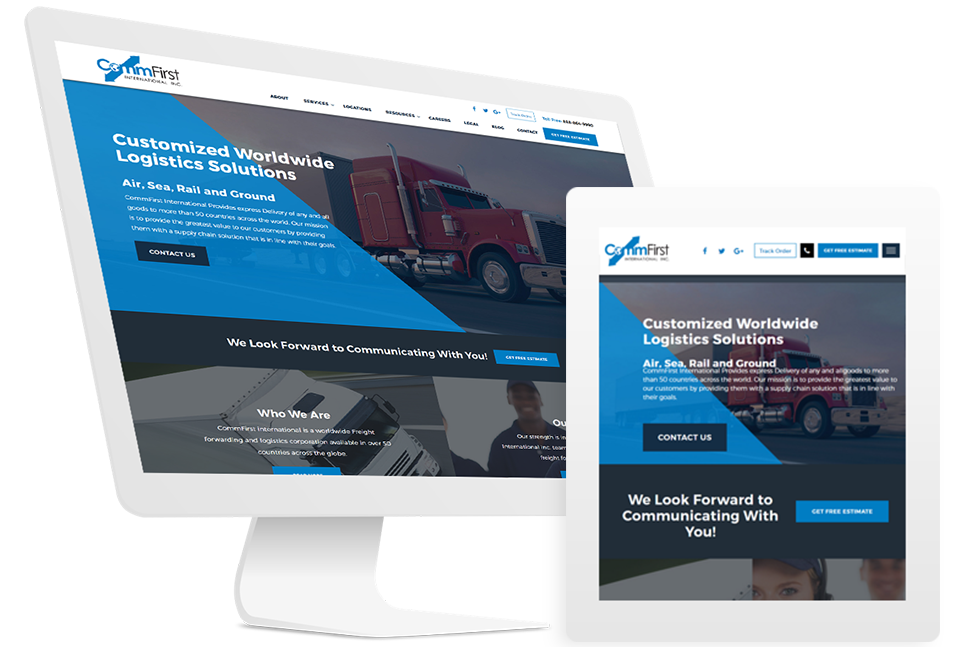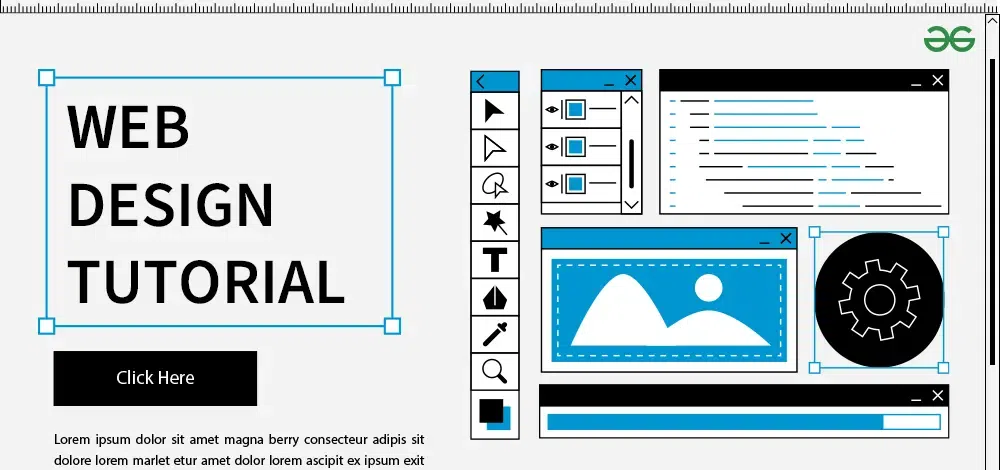Boost Your Brand Image with Remarkable Website Design Services
Boost Your Brand Image with Remarkable Website Design Services
Blog Article

Crafting a User-Friendly Experience: Vital Components of Reliable Internet Site Design
Vital elements such as a clear navigation framework, responsive layout concepts, and quick loading times offer as the foundation for involving customers properly. Understanding the hidden factors that add to effective style can lose light on exactly how to enhance individual satisfaction and involvement.
Clear Navigation Structure
A clear navigation framework is basic to effective internet site design, as it directly affects customer experience and engagement. Individuals need to be able to locate info easily, as instinctive navigation minimizes frustration and motivates expedition. An efficient format allows visitors to comprehend the partnership between different pages and material, bring about longer site check outs and boosted communication.
To achieve clarity, designers ought to utilize familiar patterns, such as side or leading navigation bars, dropdown menus, and breadcrumb tracks. These aspects not just improve functionality however likewise offer a sense of positioning within the site. Maintaining a consistent navigation framework throughout all web pages is vital; this knowledge assists individuals anticipate where to find wanted details.
Additionally, including search performance can better help individuals in finding details web content quickly. In summary, a clear navigating structure is not merely a design option; it is a tactical component that dramatically influences the general success of a site by cultivating a pleasurable and reliable user experience.
Responsive Style Concepts
Effective internet site navigation establishes the phase for a seamless individual experience, which comes to be even a lot more critical in the context of responsive style concepts. Receptive design guarantees that internet sites adapt fluidly to different display sizes and positionings, boosting ease of access throughout tools. This adaptability is accomplished with adaptable grid layouts, scalable pictures, and media questions that permit CSS to adjust styles based on the tool's characteristics.
Secret concepts of receptive design include fluid designs that utilize percents as opposed to fixed units, making sure that components resize proportionately. In addition, using breakpoints in CSS makes it possible for the layout to change efficiently in between various gadget sizes, enhancing the layout for each screen kind. The usage of receptive pictures is likewise crucial; photos need to instantly adapt to fit the display without shedding top quality or triggering format changes.
Additionally, touch-friendly user interfaces are critical for mobile users, with sufficiently sized buttons and intuitive motions boosting customer communication. By integrating these principles, designers can develop websites that not just look cosmetically pleasing yet likewise offer interesting and functional experiences throughout all gadgets. Ultimately, reliable receptive style fosters customer fulfillment, minimizes bounce rates, and urges longer engagement with the content.
Fast Loading Times
While customers significantly expect sites to fill promptly, fast packing times are not simply an issue of benefit; they are vital for retaining site visitors and improving total user experience. Research study indicates that individuals commonly abandon websites that take longer than three seconds to lots. This abandonment can result in increased bounce rates and lowered conversions, ultimately hurting a brand name's online reputation and profits.
Quick filling times enhance individual involvement and pop over here complete satisfaction, as visitors are extra most likely to discover a site that responds swiftly to their interactions. Additionally, online search engine like Google focus on speed in their ranking algorithms, indicating that a slow-moving website may battle to attain visibility in search results page.

Instinctive Interface
Rapid filling times lay the foundation for an appealing online experience, however they are only component of the formula. An intuitive user interface (UI) is important to guarantee site visitors can navigate a site easily. A well-designed UI allows individuals to achieve their goals with very little cognitive tons, fostering a seamless communication with the website.
Crucial element of an user-friendly UI consist of constant layout, clear navigation, and recognizable icons. Consistency in style components-- such as color pattern, typography, and button designs-- helps individuals recognize how to interact with the site. Clear navigation structures, consisting of logical menus and breadcrumb routes, allow customers to locate details rapidly, reducing irritation and improving retention.
Additionally, feedback systems, such as hover impacts and packing indicators, notify customers concerning their activities and the site's response. This transparency cultivates depend on and motivates continued engagement. Moreover, focusing on mobile responsiveness makes certain that customers delight in a natural experience throughout tools, dealing with the diverse ways target markets important link gain access to material.
Available Material Standards

First, make use of simple and clear language, avoiding lingo that might puzzle viewers. Stress appropriate heading structures, which not just help in navigating but likewise assist screen visitors in interpreting content power structures properly. In addition, supply alternate message for images to share their meaning to customers that rely upon assistive modern technologies.
Comparison is an additional crucial element; guarantee that text attracts attention against the history to enhance readability. Additionally, make sure that video clip and audio content includes captions and records, making multimedia easily accessible to those with hearing problems.
Finally, integrate keyboard navigability into your style, allowing individuals who can not use a computer mouse to accessibility all site functions (website design). By sticking to these easily accessible web content guidelines, web developers can produce inclusive experiences that satisfy the requirements of all users, eventually improving customer involvement and fulfillment
Final Thought
Finally, the integration of necessary aspects such as a clear navigation structure, receptive style concepts, quick packing times, an intuitive interface, and accessible material standards is essential for producing an user-friendly website experience. These components jointly improve usability and involvement, making certain that customers can effortlessly connect and browse with the site. Prioritizing these layout elements not just improves overall complete satisfaction but also cultivates inclusivity, fitting varied individual demands and preferences in the digital landscape.
A clear navigation framework is basic to efficient internet site layout, as it directly affects customer experience and engagement. In recap, a clear navigating framework is not simply a style choice; it is a critical aspect that significantly affects the general success of a website by fostering a effective and delightful user experience.
In addition, touch-friendly interfaces are important for mobile users, with appropriately sized buttons and instinctive motions enhancing try this user interaction.While users progressively anticipate websites to fill rapidly, fast filling times are not just an issue of convenience; they are necessary for retaining visitors and boosting total customer experience. website design.In conclusion, the combination of essential components such as a clear navigating structure, responsive design concepts, fast packing times, an instinctive individual interface, and obtainable web content standards is vital for developing an user-friendly site experience
Report this page